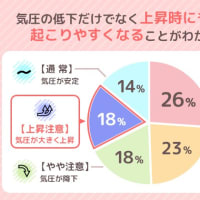SSL (company)
SSL, formerly Space Systems/Loral, LLC (SS/L), of Palo Alto, California, is a wholly owned manufacturing subsidiary of Maxar Technologies.
<カリフォルニア州パロアルトの以前の宇宙システム/LORAL、LLC(SS/L)のSSLは、Maxar Technologiesの完全所有の製造子会社です。>
SSL designs and builds satellites and space systems for a wide variety of government and commercial customers.
Its products include high-powered direct-to-home broadcast satellites, commercial weather satellites, digital audio radio satellites, Earth observation satellites and spot-beam satellites for data networking applications.
History
The company was founded as the Western Development Laboratories (WDL) of Philco (Philco-Ford since 1966).
The Space Systems Division was made a stand-alone Division of Aeronutronic/Ford Aerospace/ and was acquired by Loral Corp. in 1990 for $715 million from Ford Motor Company, and renamed Space Systems/Loral.
All other divisions of Ford Aerospace including Western Development Labs now located in San Jose were also acquired by Loral at that time.
In 2012 Space Systems/Loral was acquired by the Canadian aerospace company MacDonald Dettwiler (now MDA) for $875 million.
MDA was renamed as Maxar Technologies in 2017.
<2012年、Space Systems/Loralは、カナダの航空宇宙会社MacDonald Dettwiler(現在のMDA)から8億7500万ドルで買収されました。
MDAは2017年にMaxar Technologiesに改名されました。
>
MDAは2017年にMaxar Technologiesに改名されました。
>
SSL's major competitors are Boeing Satellite Systems, Lockheed Martin, Thales Alenia Space, Airbus Defence and Space and JSC Information Satellite Systems.[1][citation needed]
Projects
In 1960, the Courier 1B, built by then Philco, became the world's first active repeater satellite.
SSL has recently pioneered research in electric propulsion systems, lithium-ion power systems and the use of advanced composites on commercial satellites, which permit significant increases in the size and power of a satellite's payload and extends the satellite's on-orbit lifetime.
SSL also has developed new service-enhancing technologies such as super power systems for direct-to-user applications and ground-based beam forming, a technology that uses both satellite and terrestrial assets to provide mobile users with increased coverage and capacity capabilities.
As of December 2016, there are 87 SSL-built geosynchronous satellites in orbit.[2]
以下略















※コメント投稿者のブログIDはブログ作成者のみに通知されます